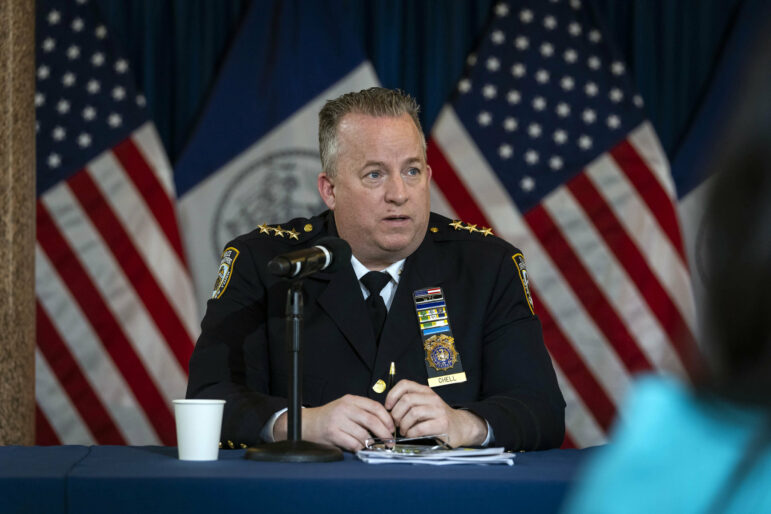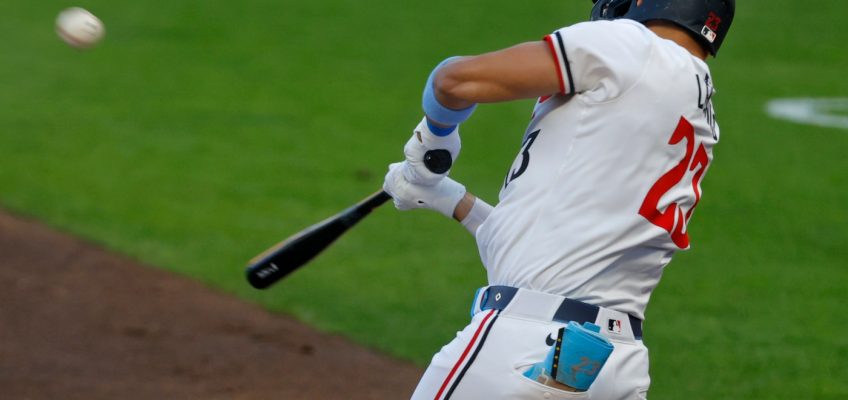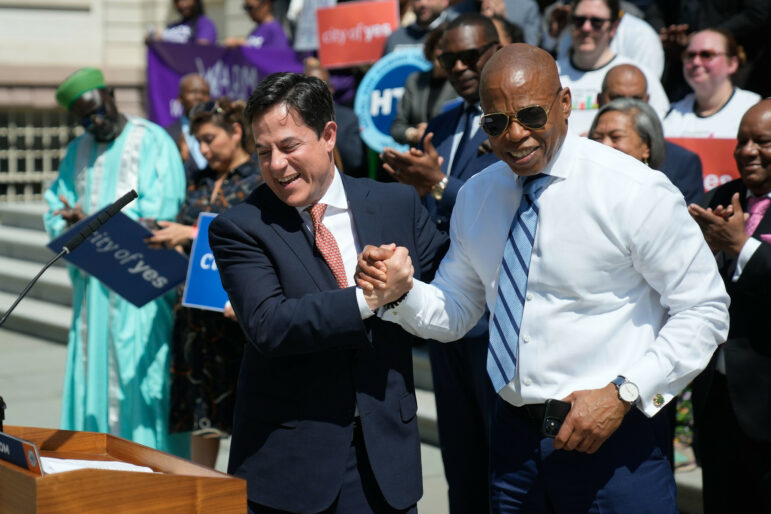“All of those tasked with upholding the rule of law have suddenly ignored the law as soon as it’s broken by those in power and close to the mayor.”
Ed Reed/Mayoral Photography Office
NYPD Chief of Patrol Services John Chell at a press briefing in 2023.
CityViews are readers’ opinions, not those of City Limits. Add your voice today!
Political spin from police is nothing new, but recent NYPD social media tactics are so brazen they actually break the law. Political rants. Call-outs. False claims. In recent months, the department’s top officials have begun using their official social media accounts to attack political rivals and defame members of the public. And in recent days, the pattern reached an all-time low with a blatant attack on prominent police reporter Rocco Parascandola.
The Department’s chief offender is NYPD Chief of Patrol John Chell. He’s repeatedly used his official X (formerly Twitter) account to attack protesters, politicians, and even the press. He absurdly attacked veteran muckraker Harry Siegel for his Daily News column, accusing him of having “disdain for the NYPD.” He also falsely accused a judge of “set[ting] free a predator back into the community” for a case she never actually presided over. Seeing a leader of the country’s largest, most heavily armed police department misuse city resources this way is chilling, but when Chell attacked elected officials, that’s when the tweets actually became criminal.
Earlier this year, Chell twice attacked City Councilmember Tiffany Cabán in lengthy rants on X. In March, he responded to Cabán’s critique of Mayor Adams’ threat to bring back discredited and discriminatory stop and frisk tactics. Chell posted an attack on Cabán’s policies with the closing line: “If you want change, vote the change you seek.”
In May, Chell responded to Cabán’s condemnation of NYPD violence against protesters. Chell not only called Cabán’s statement “garbage,” but ended the post by writing: “Remember everyone, if you want change, seek the change you want by getting involved. Then you know what to do…”
This isn’t some obscure figure within the department, or some low-level beat cop, but one of the NYPD’s highest uniformed officers speaking to an audience of more than 45,000 followers from an official New York City social media account. And Chell could not have been clearer: he used that massive city-owned bullhorn to urge New Yorkers to vote against Cabán in the next election.
And as one of New York City’s top cops, Chell should have been one of the first to know he was likely breaking the law. Chell has complete freedom to use private accounts in a personal capacity however he sees fit, but official city platforms are a different matter.
New York law comes down hard on city employees who misuse their office to influence elections. New York Election Law states that police officers who use their official authority to influence the vote can be punished with up to a year in jail. Chell’s statement, including his claim that Cabán “hates our city and certainly does not represent the great people of NYC,” fits that description.
It also violates New York City’s Charter when city employees engage in any political activity using city time or resources. Those convicted not only face potential jail time, but forfeit their city job. City employees with less political connections than Chell have been held culpable for using city email accounts to send an endorsement to coworkers. Chell didn’t just email a few colleagues, he posted publicly to tens of thousands of followers, and his comments were picked up in news stories seen by millions more.
So why hasn’t one of New York’s most prominent cops faced any consequences for committing a crime in broad daylight? New York’s district attorneys and attorney general stood by silently; our Conflicts Of Interest Board is uninterested in taking actions. All of those tasked with upholding the rule of law have suddenly ignored the law as soon as it’s broken by those in power and close to the mayor.
That’s not just a chilling sign for our city, but an alarming indicator about the state of our democracy. When the police sworn to uphold the law can openly violate it, that doesn’t just bend the rules, it breaks our democracy.
Cahn (@FoxCahn) is the founder and executive director of the Surveillance Technology Oversight Project (S.T.O.P.), a New York-based civil rights and privacy group. Lynn is a legal intern at the S.T.O.P. and a rising 2L at Berkeley Law, where she is a co-leader of the Digital Rights Project.




